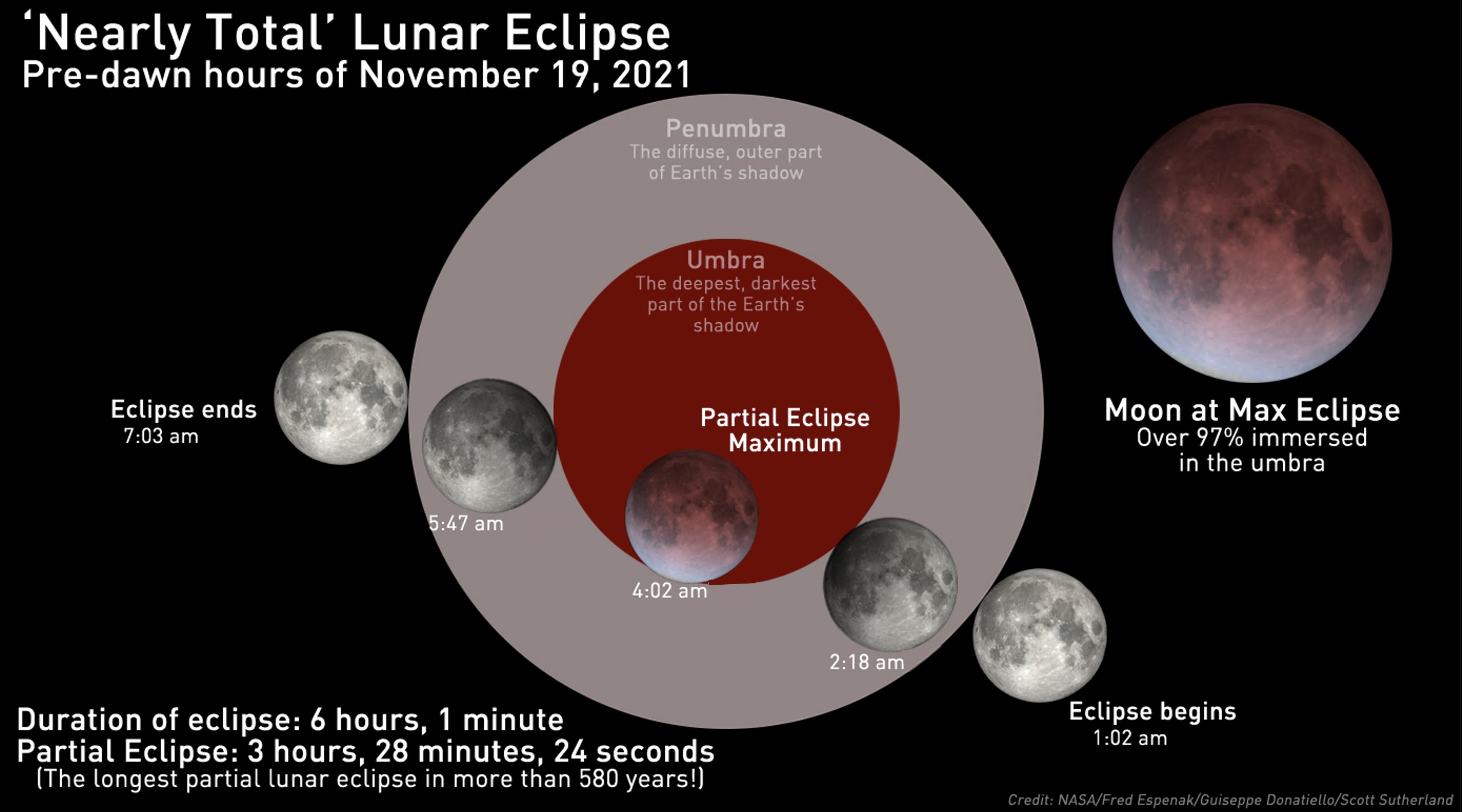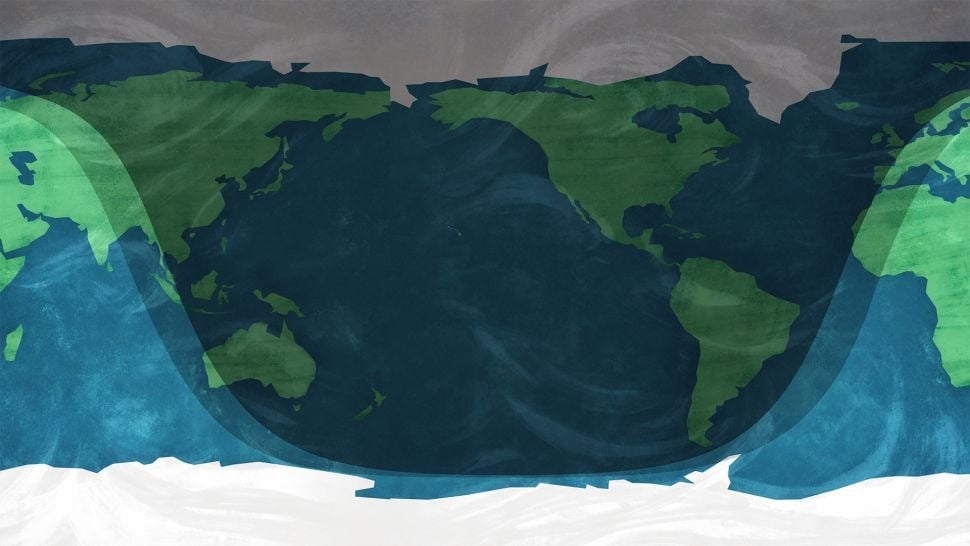
Partial lunar eclipses are typically not considered as newsworthy as total lunar eclipses. However, the one taking place overnight on November 18 and 19, 2021, is definitely worthy of a mention. It is the year's final partial lunar eclipse — and the longest one in 1000 years. With 97 percent of the Moon slipping into Earth's shadow, the celestial event also promises to be spectacular. The eclipse will be visible to a large area of the globe. Some of the best views will be reserved for North American residents.
NASA officials estimate the almost-total eclipse to last about 3 hours, 28 minutes, and 23 seconds. It will begin at about 2:19 a.m. EST on November 19 (11:19 PST on November 18), reach its maximum around 4 a.m. EST (1 a.m. PST), and end at 5:47 a.m. EST (2:47 a.m. PST). At maximum eclipse — when most of the Moon's face will be covered by the Earth's shadow — the satellite will take on the spooky red hue usually seen during total lunar eclipses.

The November eclipse's long duration is the result of a "micromoon." During the eclipse's peak point, the Moon will be just 41 hours from apogee — its farthest point from Earth. The distance causes our satellite to travel slower along its orbit and take longer to pass through Earth's shadow. In contrast, the May 2021 eclipse, which occurred just 9 hours after perigee — the Moon's closest distance to Earth — featured a supermoon.
A partial lunar eclipse happens when our planet comes in between the Sun and a full Moon. Since the three are not perfectly aligned, only part of the Moon's visible surface is covered by the Earth's shadow. Unlike solar eclipses, the celestial event can be viewed without any protective glasses.
While US residents will have to stay up late or rise early to view the partial eclipse, it may be worth losing sleep over. That's because the next partial lunar eclipse of this length will not occur until February 8, 2669!
Resources: Space.com, LiveScience.com. Earthsky.org, NASA.org
